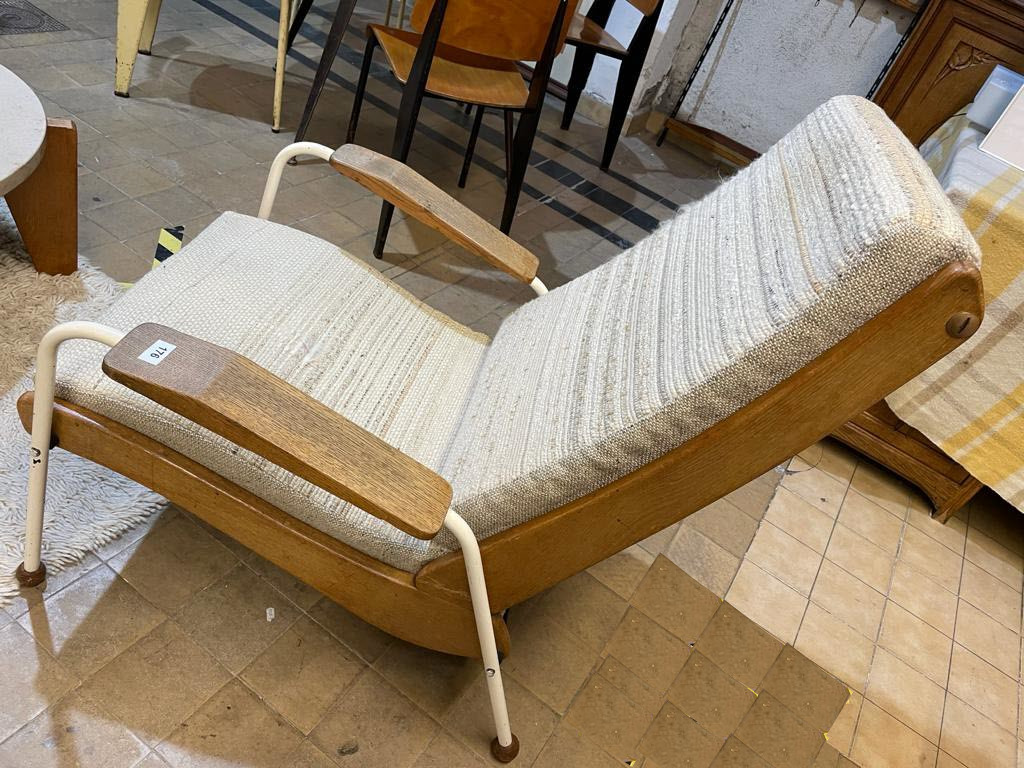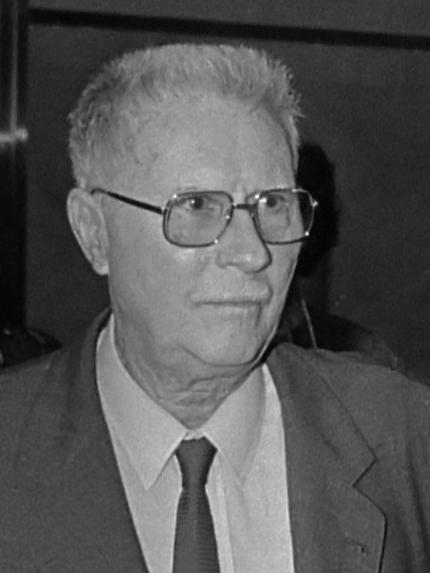Jean Prouvé… the poet of metal
[23.02.2021]On 13 February, AnticThermal in Nancy hosted a an emblematic sale of works created by Jean PROUVÉ (1901-1984) for a house designed and built at the beginning of the 1960s for his daughter and overlooking Saint-Dié-des-Vosges (about 60km from Nancy). The house itself has recently been put on sale for approximately €1.5 million. With its 250m² and 6 rooms, it is the largest house built by Prouvé. Until last year, the twenty or so pieces of furniture in the sale, with irreproachable provenance, were all installed in the immense living room of 85m². A godsend for enthusiasts of mid-20th century design, the pieces attracted some determined bidding from those who physically attended the sale (12 in all) and online bidders. AnticThermal’s auctioneer, Maître Sylvie Teitgen, had already auctioned two exceptional wrought iron elements by Prouvé taken from the old crystal glassworks of Nancy almost four years ago (2017).
A retrospective sale

Jean Prouvé, Simone Prouvé, Chaise Standard
The catalogue for the sale is a magnificent testimony to the different periods of Prouvé’s work. Although it doesn’t contain any prototypes or unique variants (which often set new auction records) some of the pieces are nevertheless extremely rare, such as the Visiteurs armchairs in white lacquered sheet metal, with backrests, armrests and ball-feet in wood. From the famous model created at the beginning of the 1940s for the furniture of the Solvay hospital in Dombasle, these 4 specimens in particular have an additional appeal since the cushions were made by Simone PROUVÉ, another of Jean Prouvé’s daughters who became a renowned weaver. Estimated between €60,000 and €80,000, two of them sold for nearly €175,000 each, tripling their high estimates; the other two fetched over €140,000.
Other stars of the sale were the seven pairs of Standard chairs, one of Prouvé’s emblematic models created in 1954 when he and Charlotte PERRIAND (1903-1999) responded to calls for tenders to furnish the Monbois University residences in Nancy and Jean-Zay in Antony (Hauts-de-Seine). Prouvé did a lot of research into collective furniture… mass-produced, simple, robust and ergonomic: desks and compas tables, bookcases, beds… For the chairs, he chose folded sheet metal and reinforced the rear legs which take the heaviest load. Produced in large numbers, the Standard chairs seem to double in price every 10 years. One of the pairs, in beige lacquered sheet metal, fetched more than €55,000; a second pair, lacquered in red, went for more than €50,000, and a third pair in blue lacquer sold for just short of €60,000.
Solid over time and never going out of style, you can still find these works on the market. In fact, Jean Prouvé’s market is constantly growing and it is relatively free from speculative buying. On the other hand, although prices are high for some items, there are still lots of genuine ‘period pieces’. Reissues have therefore not yet taken precedence over vintage ones, as is sometimes the case for post-war design.
The “House of Doctor Gauthier”
In July 1961, Doctor Pierre Gauthier, husband of Françoise Prouvé, bought Tête-de-Saint-Roch overlooking Saint-Dié for the construction of a house supervised by his father-in-law. Built in striated alluminum fronts, the house marked the evolution of construction by playing on the idea of core and load-bearing panels: the central core for the WC, bathroom and kitchen forms the main load-bearing element for the roof supports. The facades are themselves load-bearing with their rigid metal panels. To the west, extends a closed section with bedrooms, office and a large living room.
The house represents a real contribution to the history of modern architecture and a great synthesis of the Jean Prouvé’s work at the crossroads between simplicity and functionality. It also has the particularity of being movable and therefore transportable. Classified as a historical monument, it cannot be exported outside of France, but the town of Saint-Dié would surely regret its departure were it to be moved elsewhere. To avoid such an outcome, the town’s authorities have asked the Ministry of Culture and the DRAC (Regional Directorate of Cultural Affairs) to consider buying this important element of the Lorraine landscape.
Jean Prouvé the Nancéien

Jean Prouvé in 1981
Jean Prouvé was a native of the region. Born in Nancy, son of an artist himself (Victor PROUVÉ (1858-1943), painter and sculptor), he apprenticed in ironwork. Very marked by the principles of the School of Nancy, with very advanced research into design and the technical capacities of different materials, he established his studio in his hometown and produced elements for private buildings. Great architects began to call on him; MALLET-STEVENS commissioned him for the entrance gate of Villa Reifenberg, then for Villa Noailles. In a radical departure, he subsequently turned his team towards architecture and industry. Prouvé was at the origin of the use of aluminum in the design of buildings. He developed light-weight facade systems that benefited from his previous research. He had a holistic approach to the interior/exterior dichotomy: for Prouvé, there was no difference between the construction of a piece of furniture and a building. He was therefore very much in tune with the doctrine of the Union des Artistes Modernes, of which he was a founding member alongside LE CORBUSIER, Pierre JEANNERET and Charlotte PERRIAND. Prouvé gradually became a designer: he produced furniture for sanatoriums, university housing estates and schools and, above all, in post-war France undergoing reconstruction, he designed light-weight housing. Applying the same principles to the production of furniture and to architecture, the structures were produced in small series and were assembled and articulated by mechanisms allowing both furniture and buildings to be easily modified, dismantled and moved. He collaborated with prestigious architects like Jean DE MAILLY on the CNIT at La Défense in 1967 and Oscar NIEMEYER on the PCF headquarters in 1970. He also shared his knowledge by holding the Chair of Applied Arts at the National Conservatory of Arts and Trades.




 0
0
